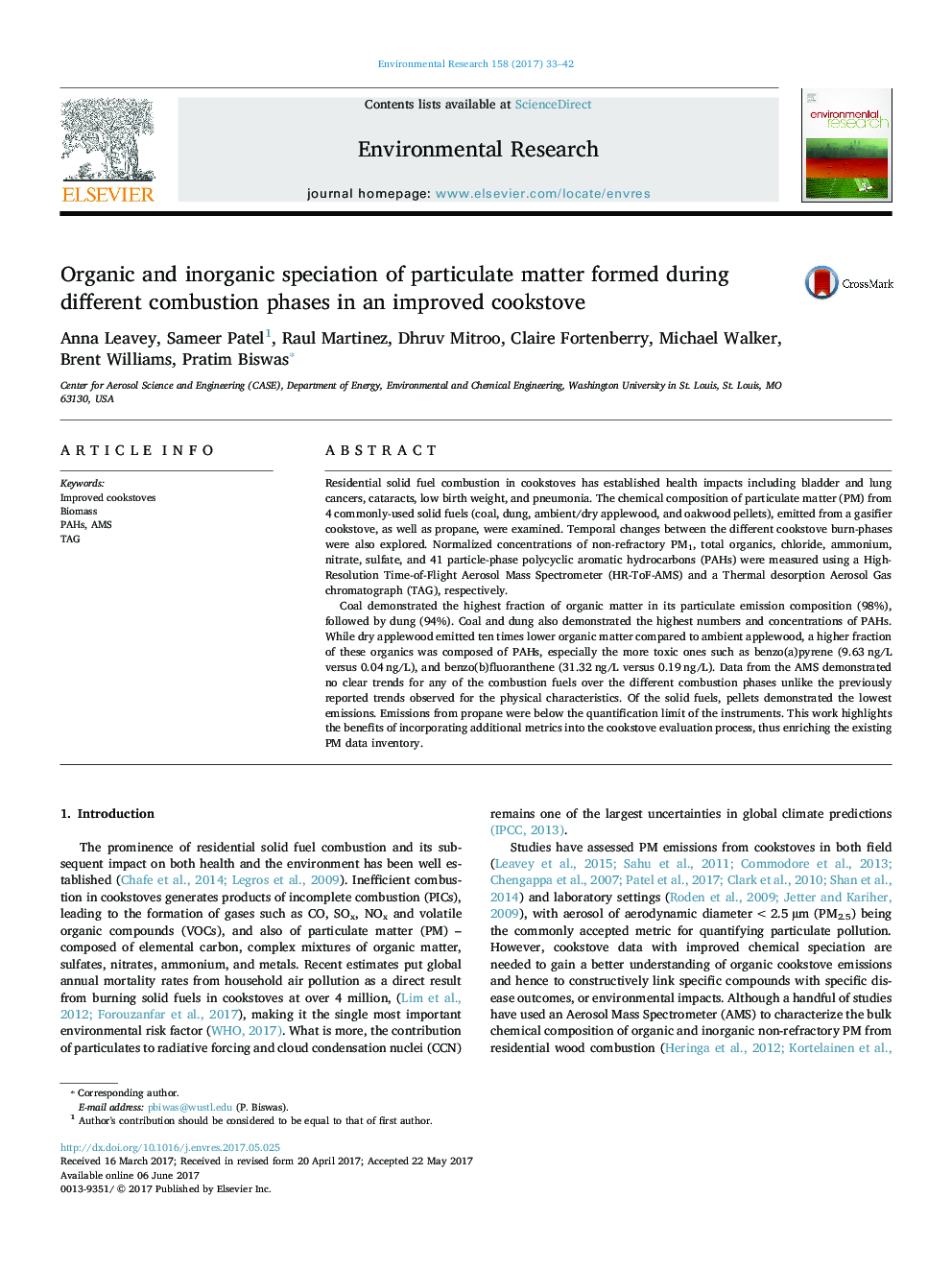| کد مقاله | کد نشریه | سال انتشار | مقاله انگلیسی | نسخه تمام متن |
|---|---|---|---|---|
| 5756319 | 1622545 | 2017 | 10 صفحه PDF | دانلود رایگان |
- The chemical composition of particulate matter from 4 solid fuels and propane were examined.
- On-line data were collected using a HR-ToF-AMS and TAG GC-MS.
- Coal and dung exhibited the highest fractions of organic matter in their particulate emissions.
- Dry applewood emitted fewer organics compared to ambient applewood, but a higher fraction of PAHs.
- Of the solid fuels, pellets demonstrated the lowest emissions, and propane was below detection.
Residential solid fuel combustion in cookstoves has established health impacts including bladder and lung cancers, cataracts, low birth weight, and pneumonia. The chemical composition of particulate matter (PM) from 4 commonly-used solid fuels (coal, dung, ambient/dry applewood, and oakwood pellets), emitted from a gasifier cookstove, as well as propane, were examined. Temporal changes between the different cookstove burn-phases were also explored. Normalized concentrations of non-refractory PM1, total organics, chloride, ammonium, nitrate, sulfate, and 41 particle-phase polycyclic aromatic hydrocarbons (PAHs) were measured using a High-Resolution Time-of-Flight Aerosol Mass Spectrometer (HR-ToF-AMS) and a Thermal desorption Aerosol Gas chromatograph (TAG), respectively.Coal demonstrated the highest fraction of organic matter in its particulate emission composition (98%), followed by dung (94%). Coal and dung also demonstrated the highest numbers and concentrations of PAHs. While dry applewood emitted ten times lower organic matter compared to ambient applewood, a higher fraction of these organics was composed of PAHs, especially the more toxic ones such as benzo(a)pyrene (9.63Â ng/L versus 0.04Â ng/L), and benzo(b)fluoranthene (31.32Â ng/L versus 0.19Â ng/L). Data from the AMS demonstrated no clear trends for any of the combustion fuels over the different combustion phases unlike the previously reported trends observed for the physical characteristics. Of the solid fuels, pellets demonstrated the lowest emissions. Emissions from propane were below the quantification limit of the instruments. This work highlights the benefits of incorporating additional metrics into the cookstove evaluation process, thus enriching the existing PM data inventory.
125
Journal: Environmental Research - Volume 158, October 2017, Pages 33-42
